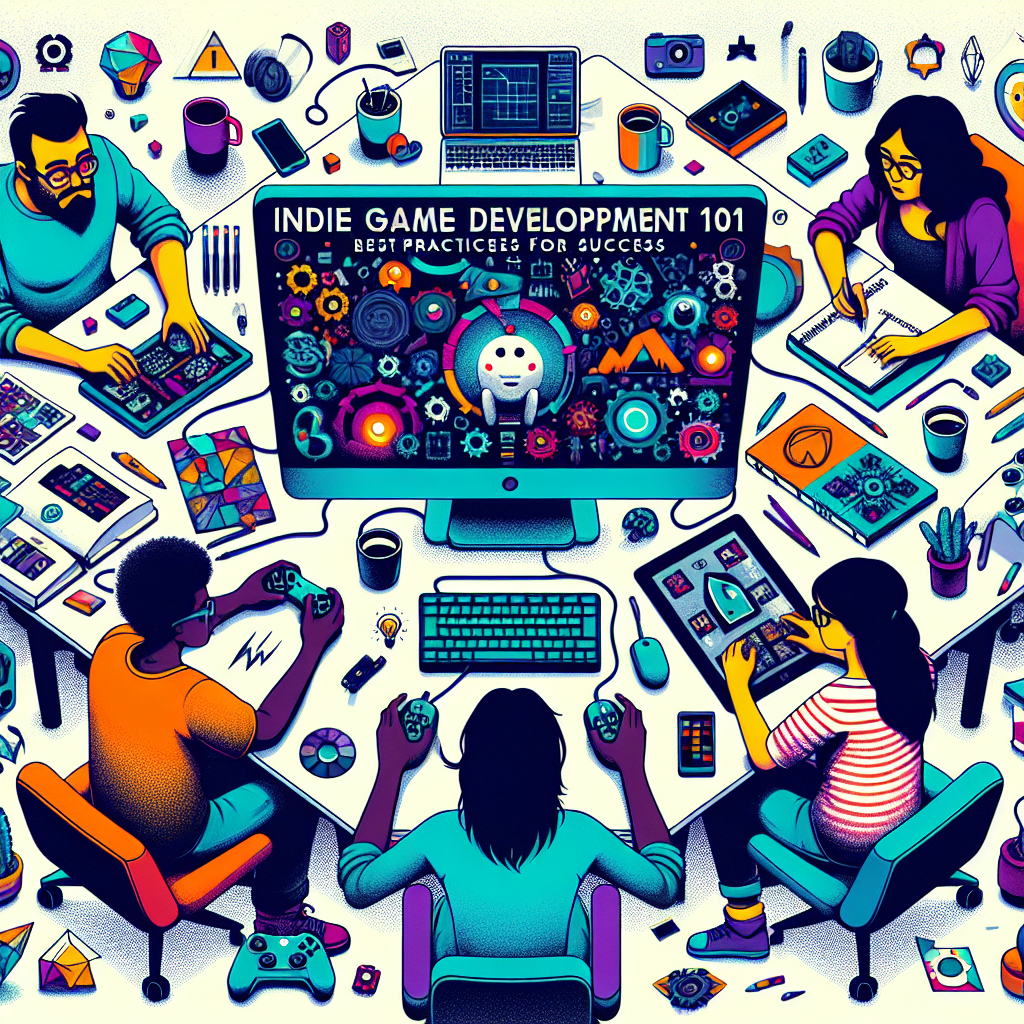Indie Game Development 101: Best Practices for Success
The world of indie game development is both exhilarating and challenging. Aspiring developers often find themselves in a realm filled with creativity, innovation, and a community that celebrates individuality. Yet, alongside the excitement, there are pitfalls and challenges that can derail even the most brilliant ideas. To help navigate this dynamic landscape, we present key best practices for indie game development that can set you on the path to success.
1. Start with a Strong Concept
Every successful game begins with a solid concept. Before diving into development, take the time to brainstorm and refine your idea. Consider the following aspects:
- Unique Selling Proposition (USP): What sets your game apart from others on the market? Identify features that make your game unique and compelling.
- Target Audience: Who will be playing your game? Understanding your audience will guide your design decisions and marketing strategies.
- Core Gameplay Loop: Define the primary mechanic and what players will do repeatedly in your game. Make sure it’s engaging and satisfying.
2. Create a Detailed Game Design Document (GDD)
Once you have a concept, create a Game Design Document. This should be a living document that outlines your game’s mechanics, story, characters, visuals, and audio. A GDD helps to:
- Clarify Vision: Keep the development process aligned with your initial vision.
- Guide Team Members: If you’re working with others, a GDD provides a roadmap that ensures everyone is on the same page.
- Streamline Development: Anticipate potential issues and complexities by detailing aspects of gameplay, level design, and user experience upfront.
3. Build a Minimal Viable Product (MVP)
Instead of trying to create a fully polished game right from the start, focus on building a Minimal Viable Product (MVP). This version of your game should include only the essential features necessary to convey your core gameplay experience. The benefits of developing an MVP include:
- Faster Feedback: Early testing allows you to gather feedback, identify issues, and make improvements.
- Resource Management: Saves time and resources by focusing efforts on the most impactful aspects of the game.
- Iteration Capability: Making adjustments based on player input encourages a more player-centered development process.
4. Prioritize User Experience (UX)
A great game is not just about fantastic mechanics but also about providing a seamless and enjoyable user experience. Consider the following:
- Intuitive Controls: Ensure that controls are responsive and easy to understand.
- Onboarding: Implement a tutorial that teaches players the mechanics organically rather than overwhelming them with information.
- Accessibility Features: Catering to a wider audience enhances your game’s reach and potential success. Consider color blindness modes, screen reader support, and customizable controls.
5. Embrace Iteration and Feedback
Indie game development is an iterative process. Be prepared to revise and refine your game based on testing and feedback. Here’s how to effectively incorporate feedback:
- Playtesting: Regularly playtest your game with external audiences. Observe how they interact with your game and pay attention to areas where they struggle.
- Feedback Channels: Create avenues for players to provide feedback, such as forums, surveys, or social media. Engage with your community to better understand their preferences.
- Be Open-Minded: Not all feedback may align with your vision, but being open to constructive criticism will ultimately strengthen your game.
6. Effective Marketing and Community Engagement
Creating a great game is just one part of the indie development equation. Marketing and community engagement are equally vital for success:
- Build an Online Presence: Create a website, social media profiles, and a blog to showcase updates, development progress, and engage with your audience.
- Utilize Platforms: Use platforms like Steam, itch.io, and Epic Games Store to host your game. These platforms often have built-in audiences that can help your visibility.
- Foster Community: Engage with your audience by sharing the behind-the-scenes of your development. This builds investment in your game and encourages word-of-mouth marketing.
7. Manage Your Time and Resources Wisely
Time and resource management can make or break an indie project. To ensure efficiency:
- Set Realistic Goals: Create achievable milestones and deadlines to keep yourself on track.
- Limit Scope Creep: Be cautious of expanding your project beyond its original parameters. Focus on quality rather than quantity.
- Utilize Tools: Leverage project management tools like Trello, Asana, or Notion to organize tasks and workflows.
8. Stay Inspired and Network
The indie game community is vibrant and supportive. Stay inspired by:
- Networking: Engage with other developers, attend industry events, and participate in game jams to learn, share experiences, and foster collaborations.
- Play Indie Games: Explore and analyze other indie games to understand what works and what doesn’t. This can spark inspiration for your game.
- Continuous Learning: Technology and trends evolve rapidly; consider online courses, tutorials, and industry news to stay current.
Conclusion
Embarking on an indie game development journey is a rewarding experience filled with creativity and potential for success. By adhering to these best practices, developers can navigate common challenges, refine their ideas, and create engaging games that resonate with players. Embrace the adventure, stay true to your vision, and remember: every journey begins with a single step. Happy developing!




